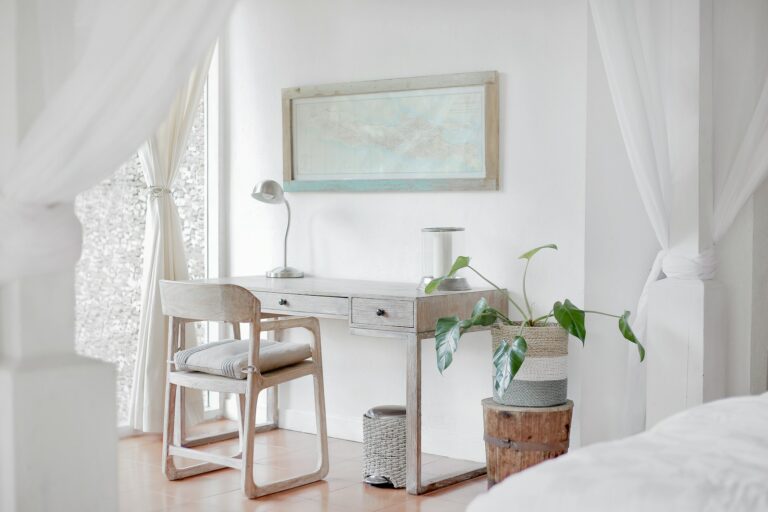Ever feel stuck in a rut of negative thinking and wonder if there’s a simple way to feel better? A 30-day happiness challenge gives you one small, joy-focused activity each day for a month, making it easier to shift your mindset and build habits that actually last. These daily challenges only take a few minutes, but they can spark real changes in how you see and experience life.
The idea is to train your brain to spot and create positive moments by practicing daily. You’re not going to wake up a brand-new person overnight, but you will build happiness skills bit by bit. Small things like gratitude lists, acts of kindness, or just a mindful minute can really add up. There’s research out there showing that these daily positive activities can actually help rewire your brain’s patterns over time.
If you’re curious about how this all works, it helps to understand what makes these challenges effective and how you can make one fit your own life. Let’s break down the basics of daily happiness practices and see how you can keep the momentum going long after the 30 days are up.
What Is The 30 Day Happy Challenge?
A 30-day happiness challenge is a simple program that leads you through daily activities meant to boost your mood and well-being. The focus is on small, doable tasks that help you build positive habits and gradually raise your happiness level.
Origins and Purpose
This challenge comes from positive psychology research, which found that little daily actions can actually change your mood and mindset in a lasting way. Turns out, happiness isn’t just something that happens to you. You can work at it.
The challenge was created to make happiness feel more accessible. Instead of waiting around for something good to happen, you take charge of your emotional health through easy, daily tasks.
Main goals:
- Building positive daily habits
- Improving your mood over time
- Creating a more optimistic outlook
- Reducing stress and negative thinking
Each day has one specific activity, and these are all backed by research suggesting they can help boost happiness. The 30-day format is long enough to see real changes, but not so long it feels impossible.
Overview of Key Benefits
A 30-day happiness challenge brings some real benefits for your mental and emotional health. People who stick with these challenges often report feeling more positive and less stressed.
A few of the main benefits:
| Benefit | Description |
|---|---|
| Mood improvement | Daily tasks lift your spirits |
| Stress reduction | Activities help you relax |
| Better relationships | Many tasks involve connecting with others |
| Increased gratitude | You start noticing good things in your life |
| Habit formation | Small actions add up to real change |
The challenge works because the tasks are small and realistic. You might journal for a bit, take a walk, or do something nice for someone. Even though these things don’t take much time, they can really shift your perspective.
Most people notice some changes within the first week. By day 30, lots of folks say they feel happier and more optimistic about life in general.
Who Should Try the Challenge
The 30-day happiness challenge is a solid fit for most adults who want to improve their mood and outlook. You don’t need special skills or experience to get started.
It’s especially good for:
- People stuck in negative thought patterns
- Anyone dealing with daily stress or feeling overwhelmed
- Folks who want better daily habits
- Anyone looking for simple ways to boost their mood
If you’re going through a tough time or a big life change, this challenge can add a bit of structure and positivity when things feel shaky.
Just keep your expectations realistic. This isn’t a treatment for serious mental health issues like depression or anxiety. If you’re struggling with those, please talk to a healthcare provider.
The challenge only takes a few minutes a day, but you do need to stick with it for the best results.
Core Principles Of Daily Happiness
Daily happiness really comes down to three things: clear intentions, positive thinking patterns, and managing stress well. These work together to make lasting changes in how you feel.
Setting Intentions for Happiness
Starting your day with a clear intention helps you focus on what brings you joy. It only takes a few minutes each morning, but it can change your whole mood.
Begin your day with purpose. Write down something you feel grateful for. Pick one small thing you’ll do to make yourself smile, like calling a friend or enjoying a slow cup of coffee.
Be specific with your intentions. Instead of saying “be happy today,” try “laugh with my family at dinner” or “savor my morning coffee.”
Track what you do. Keep a simple journal of your intentions. Note which ones actually made a difference. You’ll start to see what works for you.
Stay flexible. Some days are harder than others. If you miss a day, just try again tomorrow.
Building Positive Mindsets
Your thoughts really shape your mood. Changing up negative thinking can reduce depression and help you feel better overall.
Challenge negative thoughts. If you catch yourself worrying or feeling down, pause and ask if those thoughts are actually true. Our minds can be dramatic sometimes.
Practice gratitude. Each day, jot down three good things that happened. They don’t have to be big—a good lunch or a nice message counts.
Try positive self-talk. Swap out “I can’t do this” for “I’m learning how to do this.” It sounds small, but it makes a difference.
Focus on what you can control. You can’t fix everything, but you can choose how you react. That alone can ease anxiety.
Managing Anxiety and Stress
Stress and anxiety can block out happiness. Learning to handle these feelings protects your mental health and makes room for more joy.
Try deep breathing. When you’re anxious, breathe in for four counts, hold for four, and breathe out for four. It’s a quick way to calm down.
Break big problems into small steps. Huge tasks can feel impossible. Write down one tiny thing you can do today. It helps.
Create calm moments. Set aside 10 minutes for quiet. You might meditate, stretch, or just sit. It adds up over time.
Ask for help when you need it. If things feel too heavy, talk to a counselor or doctor. There’s no shame in getting support.
Designing Your 30-Day Happy Challenge
Making your own happiness challenge is easier if you have a plan, simple daily tasks, and a way to track your progress. The key is picking activities that suit you and using reminders to stay on track for the month.
How to Use a 30-Day Calendar
A 30-day calendar is your visual guide for the challenge. Mark your start date and number each day from 1 to 30.
Write down one activity for each day right on the calendar. This keeps you from forgetting and shows your commitment.
Put your calendar somewhere you’ll see it every day—fridge, bathroom mirror, desk, wherever works.
A few calendar tips:
- Use colored pens for different types of activities
- Add reward stickers for weekly milestones
- Have backup activities for days you’re busy
- Mark today’s task with a bright sticker
Check off each day as you finish. That little sense of accomplishment helps keep you going.
Sample Activities and Task Ideas
Pick activities that take about 5 to 15 minutes and actually interest you. Simple is better than complicated—you’re more likely to stick with it.
Week 1:
- Write down three things you’re grateful for
- Take a 10-minute walk outside
- Call a friend or family member
- Listen to your favorite song and dance around
Weeks 2-3:
- Take a 20-minute nap if you’re tired
- Cook a meal you love
- Write a positive note to yourself
- Spend 10 minutes tidying up one small area
Week 4:
- Do a random act of kindness for someone
- Try a new hobby for 15 minutes
- Watch a funny video that makes you laugh
- Take photos of things that make you smile
Mix up the activities—add in movement, social time, creative stuff, and self-care.
Tracking Your Progress
Keep track of what you do each day with a simple system. A checkmark, star, or a quick rating from 1 to 10 all work.
How to track:
- Daily checkboxes on your calendar
- Mood ratings before and after each task
- Photo journal of your activities
- Notes section for quick thoughts
Jot down a sentence about how each activity made you feel. You’ll start to see which ones really lift your mood.
Check your progress every week or so. Notice which activities you enjoy most and which days are tough.
Keep the tracking easy. If it takes too long, it’ll get annoying and you might quit.
If you can, take photos of your favorite moments. Looking back on them can be a nice boost and keep you motivated.
Sustaining Happiness Beyond 30 Days
The real challenge starts after the 30 days are over. Lasting happiness comes from turning these daily practices into habits and finding ways to keep going when the initial excitement wears off.
Turning Challenges Into Habits
It usually takes about 66 days to form a new habit—not just 30. This challenge is a great start, but you’ll want to keep it up.
Pick your top three favorite activities from the challenge. Choose the ones you liked best and that made the biggest difference.
Write them down and aim to do at least one every day. Keep it small—even five minutes is good.
Pair your happiness habits with things you already do. If you liked gratitude journaling, do it after your morning coffee. If walking helped, take a short walk after lunch.
Track your progress for another month. Use a calendar or an app to check off each day you do your chosen activities.
Mental health experts say being consistent is more important than being perfect. Missing a day isn’t a big deal, but skipping three days in a row can make it harder to start again.
Maintaining Motivation and Engagement
Honestly, it’s pretty common for motivation to dip once the structured challenge is over. Don’t worry, you’re not alone.
Try making up your own little challenges each month. Maybe pick 5 to 7 new happiness activities and give each one a shot for a week. Switching things up like this can keep it interesting.
If you can, find someone who’s also working on happiness. Send each other a quick text every day—maybe share one good thing that happened or mention a happiness activity you did. It’s simple, but it helps.
Change your routine now and then. For example, if you’re always writing gratitude lists, why not take a few gratitude photos instead? Or if you meditate in the mornings, try it in the evening for a change.
A basic happiness rating scale can be helpful. Just rate your mood from 1 to 10 each night. Over time, you’ll spot patterns and figure out when you might need to give your happiness habits a little more attention.
Set up your space so it supports your habits. Keep your journal next to your bed. Put walking shoes by the door. Make the healthy choice the easy one.
Happiness really is a skill, and it gets better the more you practice—kind of like working out.




